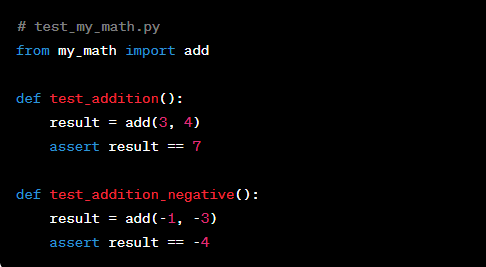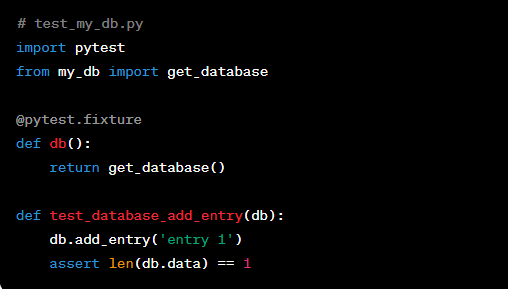Introduction:
An essential component of software development is testing. In addition to helping to guarantee that the code works as intended, it looks for any potential issues or flaws before they enter the system. Pytest is a well-liked testing framework in the Python community that offers an easy-to-use and efficient method for creating and executing tests.
What is Pytest?
A testing framework called Pytest makes it simple and scalable to create test cases. It is a flexible option for new and old projects because it can execute designed tests and is compatible with the integrated unit test framework.
Installing Pytest:
Installing Pytest can be done with the Python package management pip:

Writing Your First Test:
To begin, let’s create a basic Python function that we wish to evaluate. Take the process that adds two numbers, for instance:

Let’s now use Pytest to create a test for this function:

The assert statement used by the two test functions (test_addition and test_addition_negative) in the code above determines whether The outcome of the called add function is in line with expectations.
Running Tests:
To run the tests, you execute the pytest command in your terminal:

When a file is named test_ or ends in _test.py, pytest will automatically find it and run the test functions inside it.
Fixtures and Assertions:
Pytest supports many assertions that help you create clear, concise, and easy-to-read tests. It also has a strong fixture system for assembling and disassembling testing-related materials.
Let’s look at an instance when we need to post a more complex function:

We can write tests for this using fixtures:

The code above defines a fixture called db, which runs the get_database() function and returns a Database class instance. Afterwards, the test_database_add_entry method makes use of this fixture.
Parametrized Testing:
With Pytest, you can use parametrized testing to run the same test with different inputs. When testing a function with several data sets, this is helpful.

In this example, the @pytest.mark.parametrize decorator’s parameter sets cause the test_addition_parametrized function to be called four times, one for each possible combination.
Patching and Mocking:
You can easily construct mock objects for testing code that interacts with external services or dependencies by integrating pytest with the unittest.mock module.
Code Coverage:
Install the code-cov plugin to get reports on your test code coverage.

Then, run your tests with coverage using:

Conclusion:
Pytest is a robust testing framework that simplifies writing and executing Python tests. Due to its ease of use and adaptability, many developers favor it. You can guarantee the accuracy and dependability of your code by using pytest, which will ultimately result in more durable and maintainable software.

